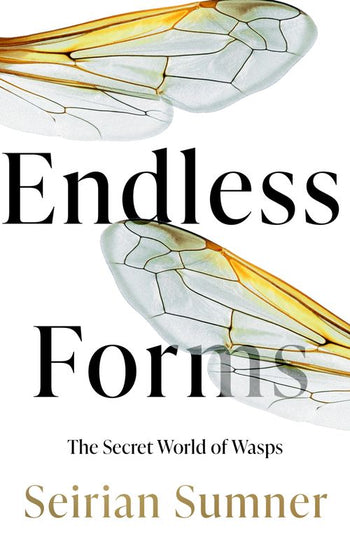Seirian Sumner
William Collins
2022
ISBN: 9780008394479
Reviewed by Richard Jones
I like wasps. They’re much more interesting than boring old bees. But I am in the minority and for many people wasps are merely irritating specks of animated malevolence come to bother you at the picnic spread or make frighteningly loud nests in your attic. Seirian Sumner also likes wasps, and well appreciates the struggle she has in getting her enthusiasm across. So, after years watching those nests intently, marking wasps with blobs of coloured paint, monitoring sister-on-sister aggression and intimidation, chasing after individual wasps whilst they’re hunting, mud-collecting, or pollinating, it is now her dedicated mission to explain just why wasp-wrangling is so fascinating and important.
Personal anecdotes soften the edges of some hard science here, and Sumner’s language is entertaining and informative. I’ve already made a mental note to pinch some of her phrases for my own use, from “Jaquelines-of-all-trades”, to “the jiggery-pokery of haplodiploidy”. Mind you, if I were to invoke an in-depth imaginary after-dinner discussion with Aristotle about what he knew about wasps 2400 years ago, and what we know now, I think I’d wait a bit longer before referring to him as the overly familiar pet name ‘Aris’.
Although all wasps, in the very broad sense of parasitoids, gall-wasps, tarantula hawks and potters are included, Sumner has most to say on the social vespines — the “paper wasps”, yellow-jackets and hornets. Despite being constantly in the shadow of honeybee research, wasp science has progressed massively in the last hundred years, particularly in the study of how social behaviour has evolved. I don’t have the right equipment for DNA barcoding of wasp prey, nor the resources to map inter-nest worker exchange of paper wasps in a deserted bullet-ridden Panama military base, but the next time I find the sand wasp Ammophila sabulosa dragging a paralysed caterpillar through the low herbage I shall make sure I follow it to see how it finds the hidden burrow nest and stocks its burrow.
I was already well on the way to being a wasp enthusiast when I started, but this book has clinched it for me. I’m sorry that this review is a bit late in the writing, but luckily this now coincides with the release of the newborn paperbacks into the wild. In a clever marketing move (and also a subtle psychological masterstroke) the subtitle has been changed and Sumner now explains “why we should love wasps”. Fly away little books, and do your mistress’s bidding.


